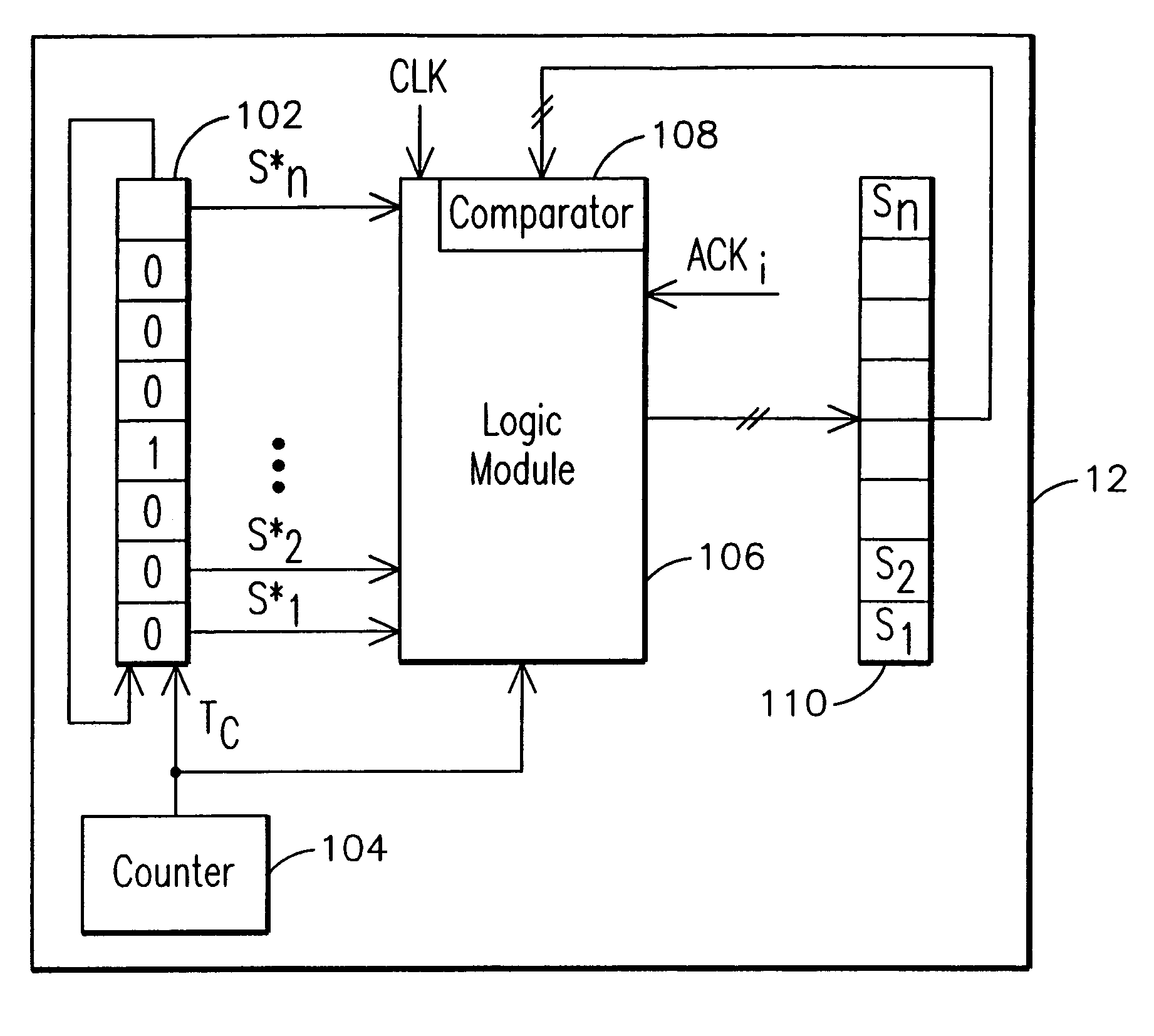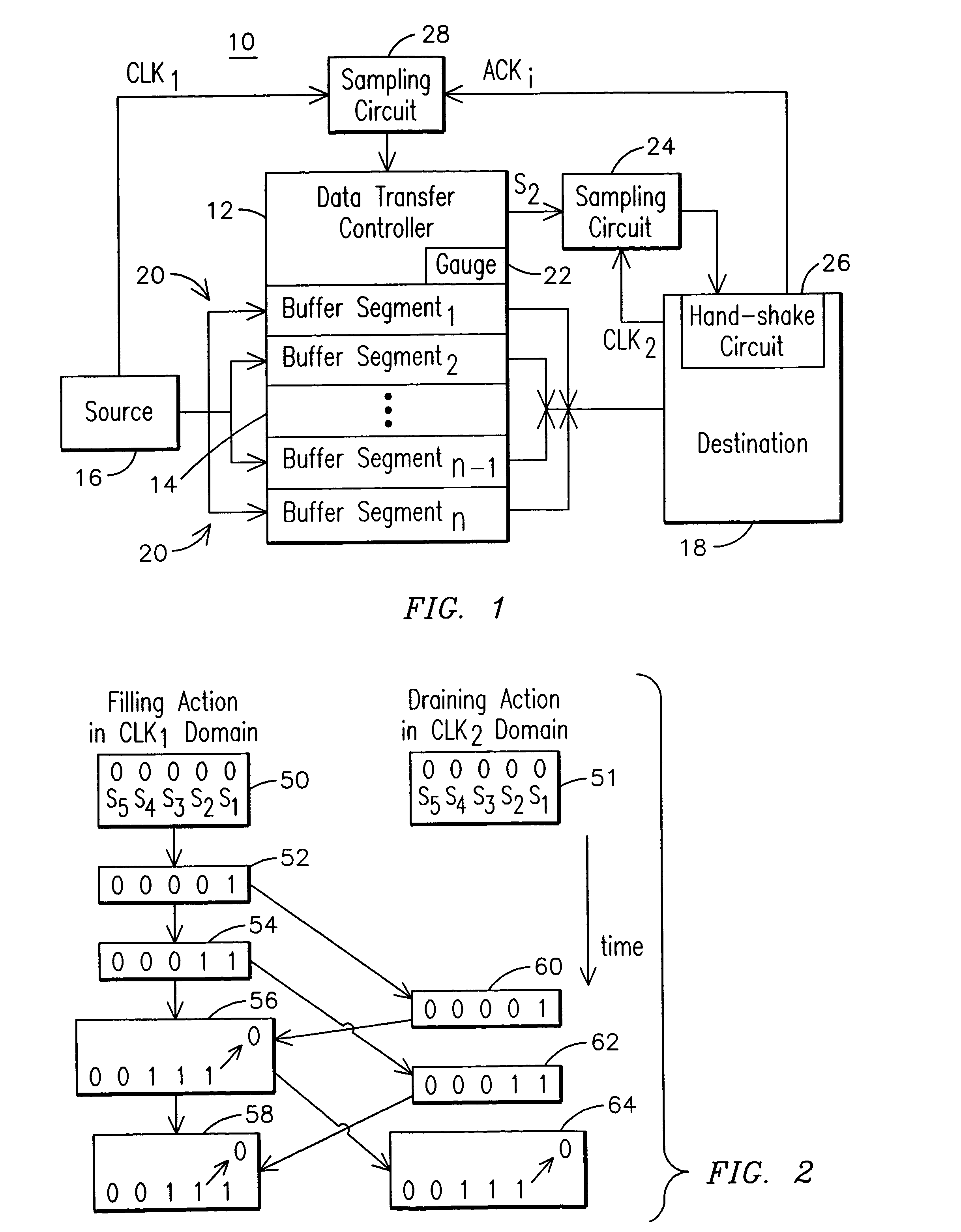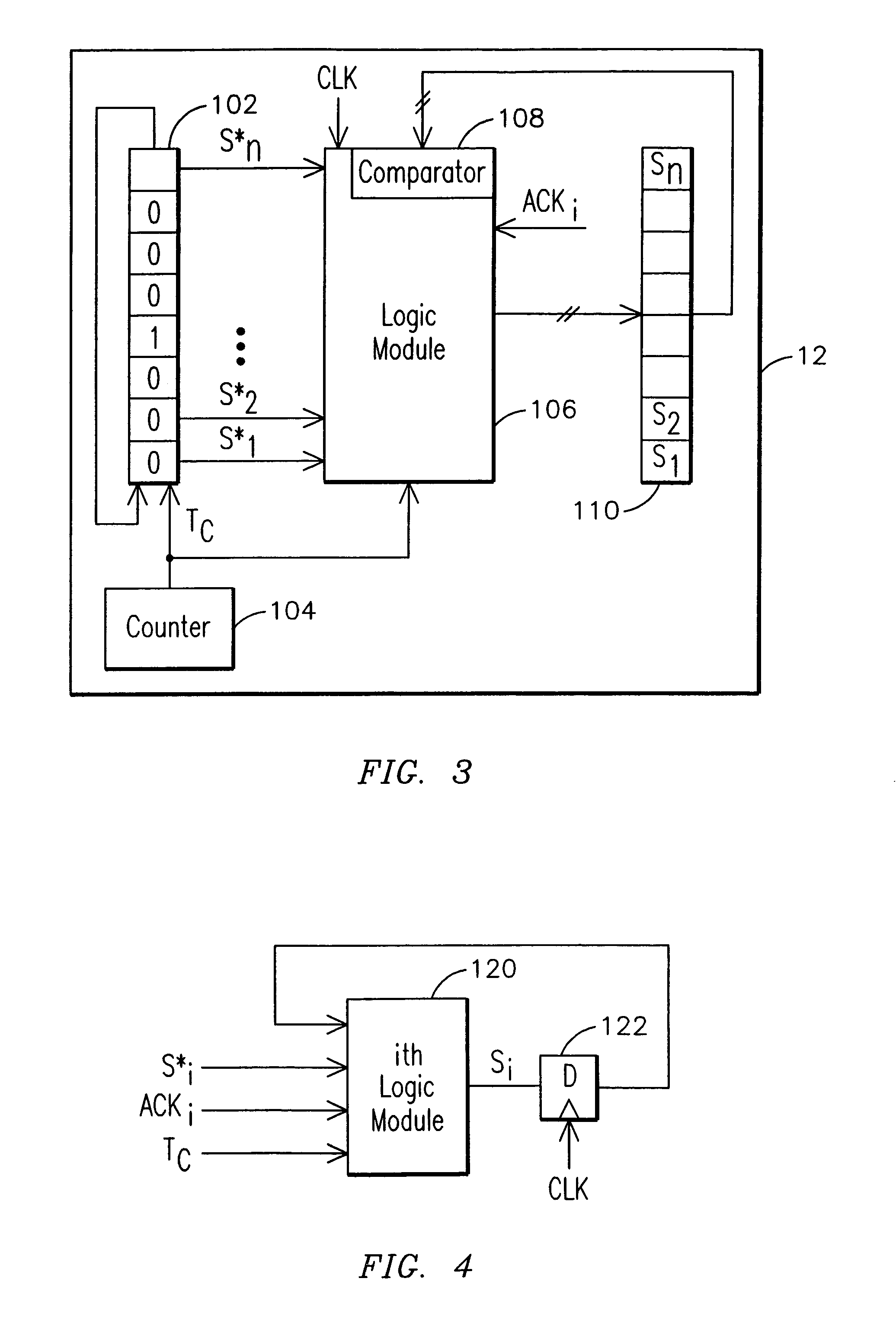Method and system for asynchronously transferring data
a technology of asynchronous data and data transfer, applied in the field of data transfer, can solve the problems of memory overflow, memory underflow, and significant amount of latency in data transfer between such devices
- Summary
- Abstract
- Description
- Claims
- Application Information
AI Technical Summary
Benefits of technology
Problems solved by technology
Method used
Image
Examples
Embodiment Construction
[0017]FIG. 1 illustrates a system 10 including a data transfer controller 12 for asynchronously transferring data by way of a buffer device 14, such as a first-in, first-out, last-in, last-out, or any other type of generally temporary storage device, between a data source device 16 and data destination device 18. A buffer-segment module, conceptually represented by branches 20, is configured to define a plurality of buffer segments in the buffer device, e.g., buffer SEGMENT1 through buffer SEGMENTn. In one exemplary embodiment, the size and / or number of the buffer segments may be dynamically adjustable from a selectable range of buffer segment size and / or number. For example, assuming the total size of the buffer is 512 bytes, and further assuming that the selectable range of the number of segments is from two to eight buffer segments, then the size of each segment would be equal to 64 bytes in case the buffer was mapped or divided into eight buffer segments. Conversely, the size of...
PUM
 Login to View More
Login to View More Abstract
Description
Claims
Application Information
 Login to View More
Login to View More - R&D
- Intellectual Property
- Life Sciences
- Materials
- Tech Scout
- Unparalleled Data Quality
- Higher Quality Content
- 60% Fewer Hallucinations
Browse by: Latest US Patents, China's latest patents, Technical Efficacy Thesaurus, Application Domain, Technology Topic, Popular Technical Reports.
© 2025 PatSnap. All rights reserved.Legal|Privacy policy|Modern Slavery Act Transparency Statement|Sitemap|About US| Contact US: help@patsnap.com



